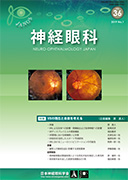Volume 36, Issue 1
Displaying 1-15 of 15 articles from this issue
- |<
- <
- 1
- >
- >|
Prefatory Note
-
2019 Volume 36 Issue 1 Pages 1-2
Published: March 25, 2019
Released on J-STAGE: April 23, 2019
Download PDF (238K)
Guest Articles
-
2019 Volume 36 Issue 1 Pages 3-4
Published: March 25, 2019
Released on J-STAGE: April 23, 2019
Download PDF (203K) -
2019 Volume 36 Issue 1 Pages 5-11
Published: March 25, 2019
Released on J-STAGE: April 23, 2019
Download PDF (539K) -
2019 Volume 36 Issue 1 Pages 12-21
Published: March 25, 2019
Released on J-STAGE: April 23, 2019
Download PDF (7222K) -
2019 Volume 36 Issue 1 Pages 22-29
Published: March 25, 2019
Released on J-STAGE: April 23, 2019
Download PDF (977K) -
2019 Volume 36 Issue 1 Pages 30-35
Published: March 25, 2019
Released on J-STAGE: April 23, 2019
Download PDF (909K) -
2019 Volume 36 Issue 1 Pages 36-43
Published: March 25, 2019
Released on J-STAGE: April 23, 2019
Download PDF (1773K)
Original Articles
-
2019 Volume 36 Issue 1 Pages 44-53
Published: March 25, 2019
Released on J-STAGE: April 23, 2019
Download PDF (2976K)
Case Reports
-
2019 Volume 36 Issue 1 Pages 54-59
Published: March 25, 2019
Released on J-STAGE: April 23, 2019
Download PDF (2508K) -
2019 Volume 36 Issue 1 Pages 60-65
Published: March 25, 2019
Released on J-STAGE: April 23, 2019
Download PDF (2452K)
Introductory Series 114
-
2019 Volume 36 Issue 1 Pages 66-75
Published: March 25, 2019
Released on J-STAGE: April 23, 2019
Download PDF (2466K)
Neuro-Ophthalmology Series with Sourcebooks
-
2019 Volume 36 Issue 1 Pages 76-86
Published: March 25, 2019
Released on J-STAGE: April 23, 2019
Download PDF (10103K)
Report of the Latest Equipment
-
2019 Volume 36 Issue 1 Pages 87-94
Published: March 25, 2019
Released on J-STAGE: April 23, 2019
Download PDF (3127K)
Asian Section
-
2019 Volume 36 Issue 1 Pages 95-105
Published: March 25, 2019
Released on J-STAGE: April 23, 2019
Download PDF (2959K) -
2019 Volume 36 Issue 1 Pages 106-111
Published: March 25, 2019
Released on J-STAGE: April 23, 2019
Download PDF (1503K)
- |<
- <
- 1
- >
- >|
